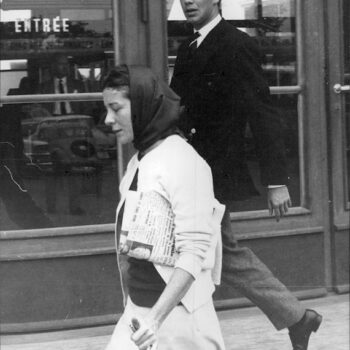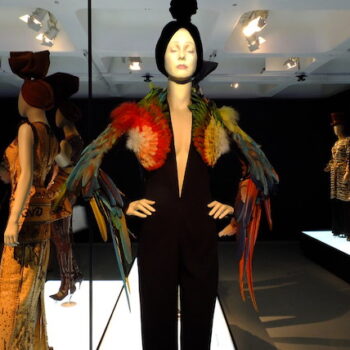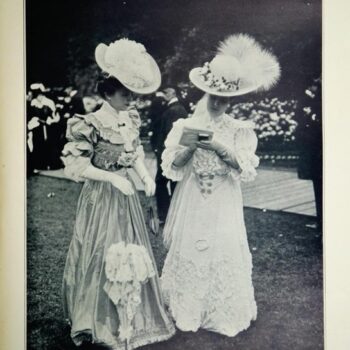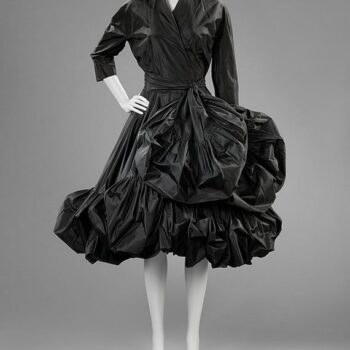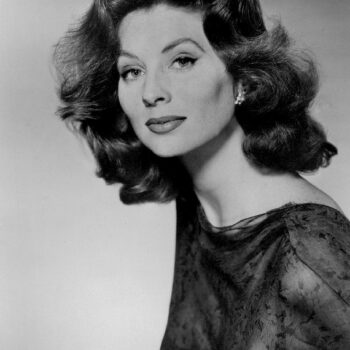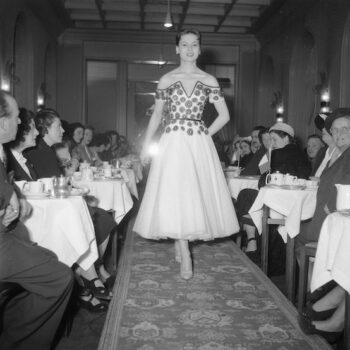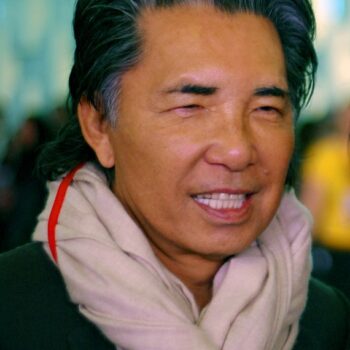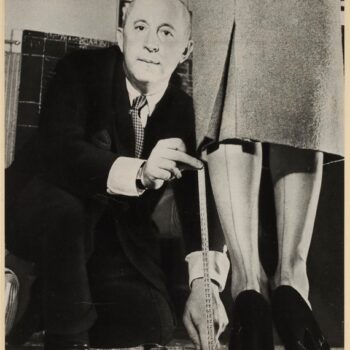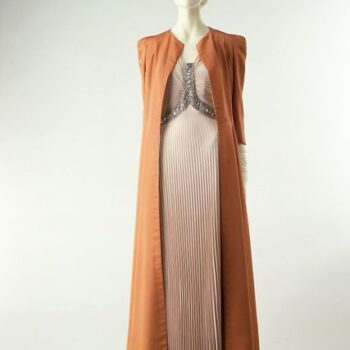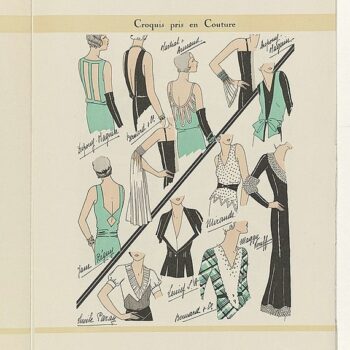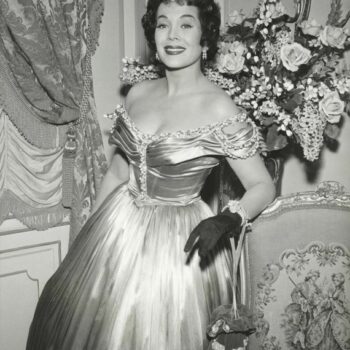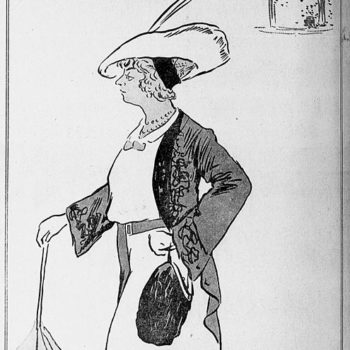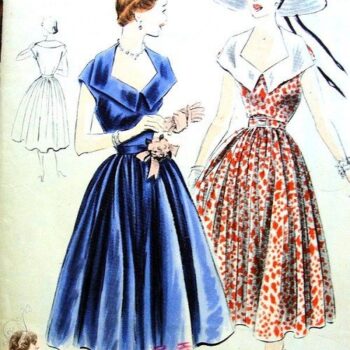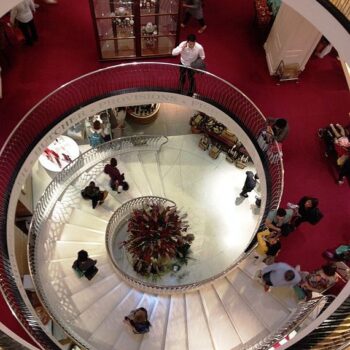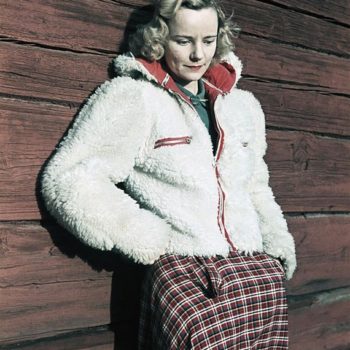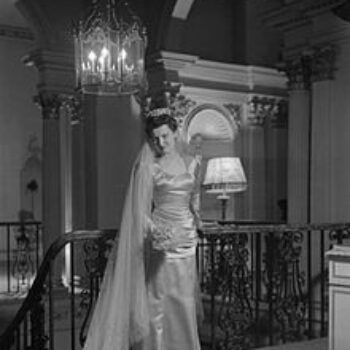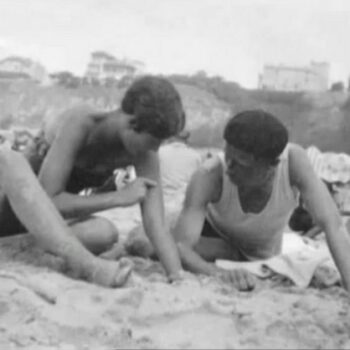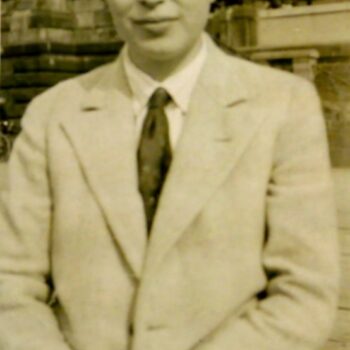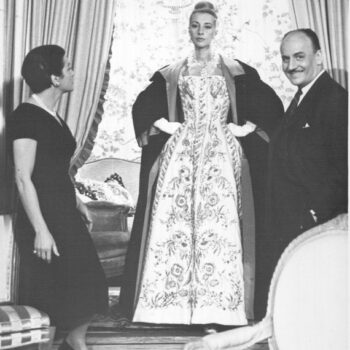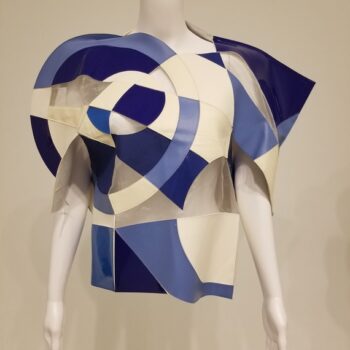Incredible Couturiers – Christian Dior
March 25, 2017Christian Dior is revered in history as the inventor of the “New Look”: the man who brought elegance and femininity back to the drab wardrobes of sad, post war women back in 1947. In fact, he wasn’t the only designer to do a nipped in waist with full skirts, he was just one of the first to show it to the world.
His restrictive designs were also not necessarily welcomed by women who had got used to more comfortable dress, and even fellow designers were scathing about his work. Coco Chanel, when asked about her fellow designer, said “Dior? He does not dress women, he upholsters them.” Cristóbal Balenciaga, another fellow designer, was also very rude about Dior’s layers of padding, starching and tulle.
But if Christian Dior (born 21st January 1905)’s designs were not universally beloved, his business acumen was to bring him high acclaim. The exports of the Christian Dior company made up 75% of that of the Paris Fashion industry by 1957, and his name and work were deemed invaluable to the French economy.
He was not born into fashion, but rather a life of leisure, as his father was a rich fertilizer manufacturer. His mother was an elegant socialite who Christian looked up to all his life, and it was her femininity who inspired him in his fashion design.
Christian Dior – the art dealer turned fashion designer
Christian’s first career was as an art dealer. His father gave him money to open an art gallery in 1928. But his father lost most of his money in the stock market crash of 1930, forcing Dior to close the gallery and go out to earn his own living – but not exactly as a shoe shine boy. In fact his desire for expensive living never left him, and like many designers whose family came from the social circles who were already dressed by couturiers, the connections came in handy. The artistic Dior got a job with fashion designer Robert Piguet, and his designs were noted by the press.
His career was interrupted by WW2 and he was conscripted for war work in 1939, returning to Paris in 1941. He then worked for Lucien Lelong, who was the head of the French Chamber of Couture, an extremely influential person for the whole of French fashion especially during the war years and just afterwards. A few years later Dior was able to start his own business with the blessing of Lelong, at the prestigious address of 30, Avenue Montaigne, where the House of Dior is based to this day.
Wartime extravagances
The House of Dior was launched in partnership with the textile manufacturer Marcel Boussac, one of the richest men in Paris, who loved his sketches for outfits that used lavish amounts of fabric. In second world war Britain, designers who used the least amount of fabric possible to save resources were thought of as patriotic.
Women were encouraged to remember they were saving their country every time they longed for a new dress they couldn’t have. In France, which was quickly occupied by the Germans, the opposite was the case. Women felt that they were cocking a snook at the Germans by refusing to wear drab, fabric saving clothes and sensible shoes and frequently appeared in impractical high heels, luxurious fabrics and elaborate hats.
French fashion industry
The French fashion industry, meanwhile, headed by Lucien Lelong, argued that it was maintaining important jobs in producing these creations, when critics said that war time was too serious for resources to be wasted on something so flippant as new hats. The Germans did insist that couture clients and reporters for the couture shows were only to come from pro-German or neutral countries, so England, America or any of the Allies were banned from French couture.
So, Dior’s use of extravagant amounts of fabric had been going on for several years before the New Look was unveiled. Properly called “The Corolle” it was famously named the New Look when Carmel Snow, the editor of Harper’s Bazaar exclaimed “It’s quite a revolution, dear Christian! Your dresses have such a new look!” Of course the reason they looked “New” was because Carmel hadn’t seen any French fashion for years, but in fact several other designers had been experimenting with the silhouette as a direct progression from the triangular shoulders and feminine shapes of the early 1940s, before the war started. Because of fabric restrictions, British and American fashions had gone the other way. With no spare fabric for padding in shoulders or extra yardage for flouncy skirts, the 1940s look in these countries was much simpler and more streamlined.
Flower women
In fact, Dior admitted that his source of inspiration for what he deemed his “flower women with soft shoulders, blossoming bosoms, waists as slender as creepers and skirts as wide as corollas” came for a large part from his friend, the designer Charles James.
James had been pushing the hourglass look since the 1930s when it was wildly unfashionable, but Christian Dior took it and ran with it. Charles James was a known designer at the time, but Dior was the one who became a megastar with the hourglass figure, partly because of his astute business sense.
Shy and quiet in demeanour, he made sure that his fashion shows packed a punch. Normally the unveiling of a new collection involved sedate models winding their way through a small drawing room full of clients and the press sitting on gilt chairs, pausing to let people examine the clothes more carefully if requested. But Dior had a runway which the models stomped down in a much more dynamic fashion, swirling their skirts and turning on their heels. They were exciting and much more like the shows we’re used to today.
Perfume, underwear and scarves
Christian Dior disseminated his brand by creating the perfume Miss Dior. He also put his name to a range of accessories including ties, hosiery, furs, hats, gloves, handbags, jewellery, lingerie, and scarves. The French Chamber of Couture was pretty horrified by this development, and denounced it as degrading to the image of haute-couture. Nevertheless, the practice was only to grow from thereon, and not just in the House of Dior.
When Dior realised his work was being directly copied abroad, (piracy was a very, very common practice) he succeeded in getting paid a percentage of every sale, and negotiated licensing deals with companies in different countries, where his original designs were sent over and made in ateliers or factories in each territory.
Christian Dior – Regular innovations
He also stimulated press interest by insisting on creating an entirely new silhouette every season. So his designs would change from the “X Line” to the “H Line” to the “Y” and “A” Line, from the flat fronted to the bolstered bosom. He didn’t have a signature shape, technique or even colour, and his work didn’t naturally evolve season by season.
Instead, Dior would fall into a deep depression twice a year, shutting himself away in one of his country mansions, seeing no-one but his valet as he stared at an empty page, doodling despondently. Suddenly the inspiration would hit, and hundreds of sheets of paper would be filled with the new season’s creations. His tense assistants, hovering outside, would let out a huge cheer when he appeared all smiles, sketches in hand.
Christian Dior – A popular boss
Christian Dior was absolutely loved by his staff, whom he always treated courteously. He would bow politely to even a lowly apprentice, and spent months looking for the perfect Christmas gift for each employee – and considering he had hundreds, this was quite a feat.
Dior also had a close group of artistic friends, and unless in the throes of creativity, hated dining alone. He would have elaborate meals with Charles James, the artist Jean Cocteau, the composers Georges Auric and Francis Poulene, and his directrice Raymonde Zehnacker.
Christian Dior -Film stars and Royalty
Christian Dior designed for the highly fashionable British Princess Margaret as well as all the film stars of the day, including Jane Russell. He also designed for three films, Man About Town (1947), Les Enfants Terribles (1950), and Indiscretion of an American Wife (1953).
Christian Dior eventually opened salons in London, New York and Caracas as well as Paris. Because each country had different fashion demands, in all Dior needed to make about a thousand designs each year, and due to the fact that he strove to make each season radically different, this was a very hard task for anyone.
Dior’s health began to suffer; he was very stressed and his directrice Mme Raymonde began to be woken in the night with phone calls from him, crying down the line. He often had himself driven round and round the block before he felt composed enough to face his staff in the morning. Dior suffered two heart attacks, which were kept a secret lest they damage his business.
Christian Dior – Death and the Boyfriend
Christian Dior was also disappointed in love. Although he had lots of good looking gay friends, most of those he fancied didn’t want to become his boyfriend. Finally he was happy because in 1956, a man named Jaques Benita reciprocated. Jaques was much younger than him, and Dior decided to lose weight and generally make himself more attractive for his young lover. In summer 1957, Dior set off for a spa visit to the fashionable resort of Montecatini in Italy. The rest must have been a shock to his system, (either that or the rumoured vigorous sexual activity that took place in his hotel room) because after ten days of his holiday, Dior died of a heart attack.
The house of Dior continues today. When Dior died, although the house was in chaos it wasn’t closed because of its licensing deals and its importance to the economy of France – instead, 21 year-old Yves Saint Laurent was promoted to Art Director after being selected by Dior as Head assistant, and working closely with the designer himself. After Yves Saint Laurent was called up into the French army, the house went through a succession of directors. Today the post is held by Maria Grazia Chiuri.
You might also enjoy this post about 1950s fashions
And this one about 1950s film and how it influenced fashion
Christian Dior




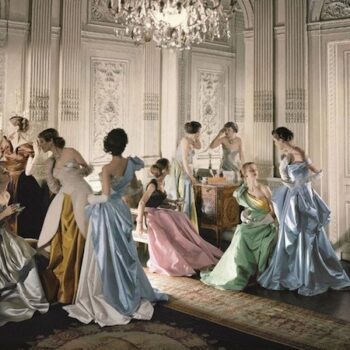
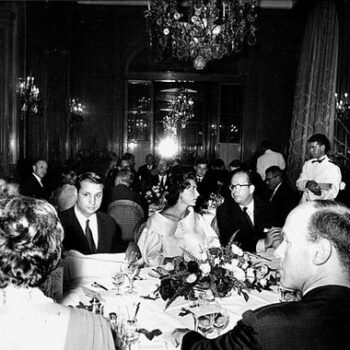
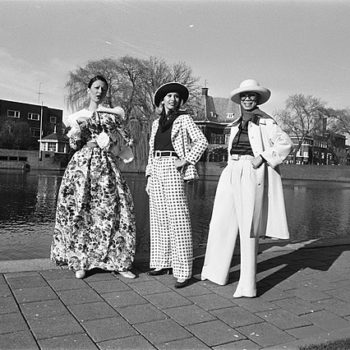
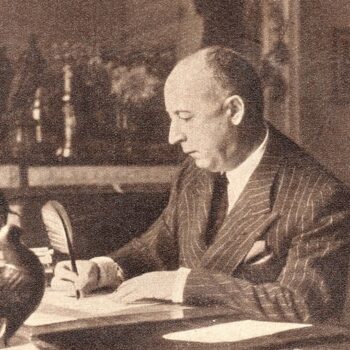
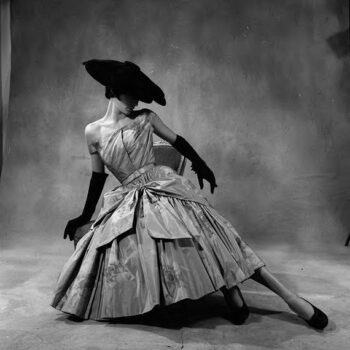

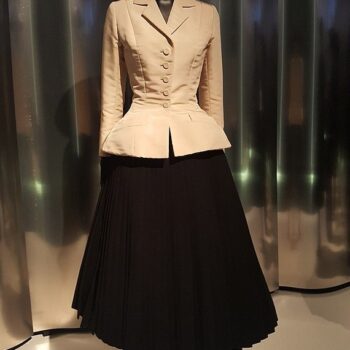
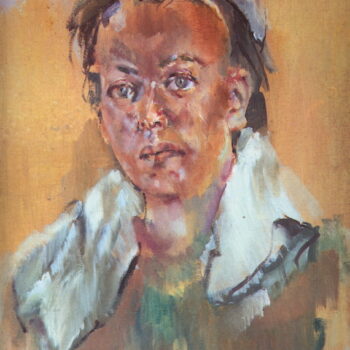
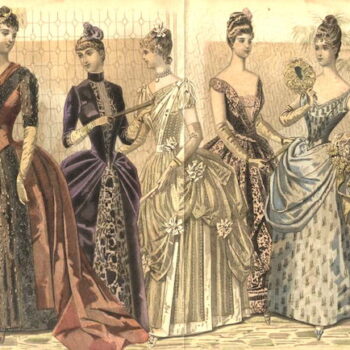
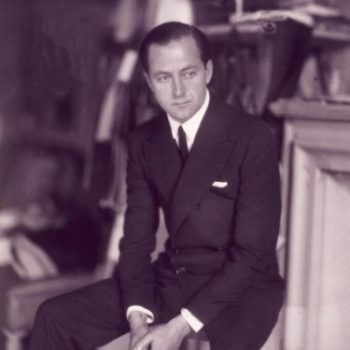
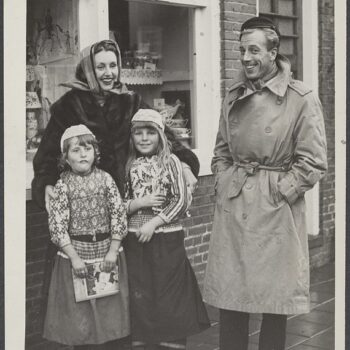
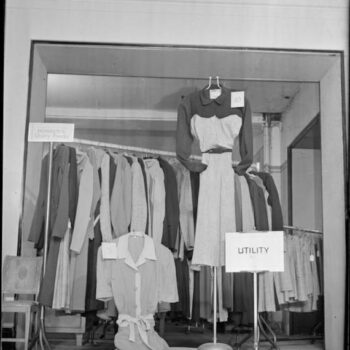
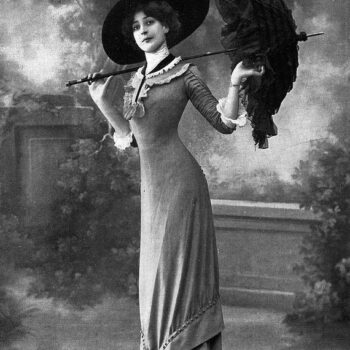

![Azzedine Alaïalogo. By alaia.fr (alaia.fr) [Public domain], via Wikimedia Commons](https://www.blue17.co.uk/wp-content/uploads/2017/11/Azzedine_Alaïa__Alaia__corporate_logo-350x350.png)
